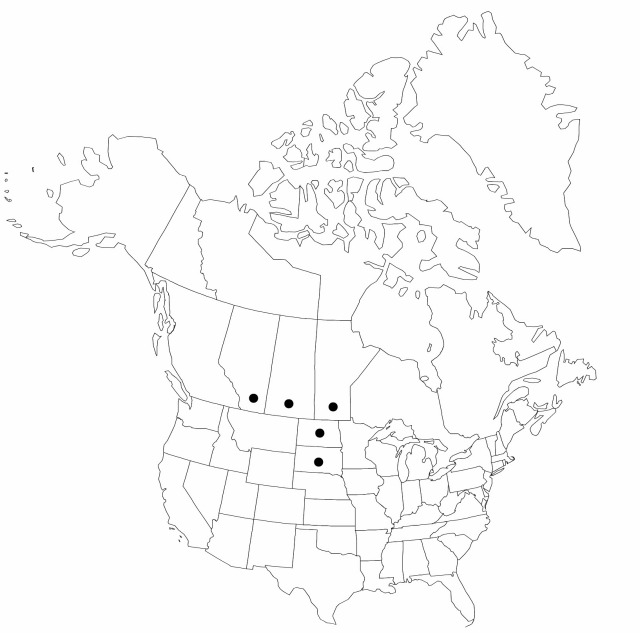Carex hookeriana
Amer. J. Sci. Arts 29: 248, plate X, fig. 75. 1836.
Plants without conspicuous rhizomes. Culms 15–80 cm, 1.5–2 mm wide basally, 0.5 mm wide distally. Leaves: sheaths tight, green, fronts white-hyaline; ligules less than 2 mm, wider than long; widest leaf-blades 1.5–2.5 mm wide. Inflorescences with 5–10 spikes, 2–5 cm × 5–10 mm; proximal internodes 1–2 times as long as proximal spikes; proximal bracts 1–2 cm; spikes with 5–10 erect perigynia. Pistillate scales brown with green midvein, ovate, 2.7–3.6 × 1.4–2.1 mm, body longer and wider than perigynium, apex awned. Anthers not measured. Perigynia pale green to pale-brown, veinless or obscurely veined abaxially, 2.6–3.5 × 1.2–1.5 mm, margins serrulate distally; beak 0.8–1.5 mm, apical teeth 0.3–0.5 mm. Achenes elliptic-circular, 1.5–1.7 × 1.1–1.2 mm.
Phenology: Fruiting late spring–early summer.
Habitat: Swamps, mesic to wet-mesic grasslands and open forests
Elevation: 300–500 m
Distribution

Alta., Man., Ont., Sask., N.Dak., S.Dak.
Discussion
Carex hookeriana was collected once in Ontario along Lake Superior’s north shore, but its status in Ontario is unclear.
Selected References
None.
Lower Taxa
"shortened" is not a number."longer and wider" is not a number.
